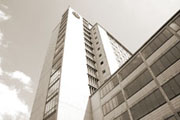University Buildings
Welfenschloss
Welfengarten 1
The Welfenschloss at Welfengarten 1 has been the centre of what is now Gottfried Wilhelm Leibniz Universität since 1879. The palace was first designed as the seat of the Kingdom of Hannover.
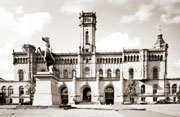


Leibnizhaus
Holzmarkt 5
Contrary to what one might expect, the Leibnizhaus on Holzmarkt 5, was built in 1983 as an academic meeting place. The name and design of the facade are reminiscent of the dwelling of Gottfried Wilhelm Leibniz, the universal scholar after whom the university is named.
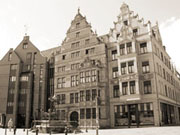


Königlicher Pferdestall
Appelstraße 7
Between 1885 and 1888, the building Königlicher Pferdestall was built for the 1st uhlan regiment No. 13 in Hannover. Following its military use, the two-storey redbrick building became the property of the former polytechnic college in Hannover, today’s Leibniz University Hannover. During this period, it was used as an institute building, as well as for conducting experiments and courses. Today, the building has been converted into a forum for communication, science and culture.
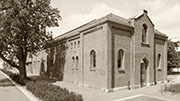


Bornemannsches Haus
At the corner of Schmiedestraße/Grupenstraße
The Bornemannsche Haus was the first site of the Higher Trade School. It no longer exists, having been destroyed in an air raid in the Second World War. The building was in a central location in the historic centre of Hannover opposite the Marktkirche and city hall in Marktstraße 60/61. This is where Grupenstraße starts today, built after the war as part of the urban redevelopment of Hannover.
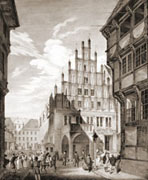


The Polytechnic
Kröpcke/Georgstraße
The first building to be erected for the Higher Trade School and taken over by it in 1837 was where the Kröpcke Centre stands today. It was destroyed in the Second World War. The Hannoverian architect Ernst Ebeling designed the college in the Rundbogen style, using rounded arches.
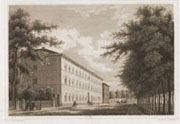


Schloßwender Straße Complex
Schloßwender Straße 1-5
The Institute of Technolgy began to use the buildings at Schloßwender Straße 1-5 in 1937, when the Department of Architecture moved into some of the rooms. The buildings had been erected at the end of the 19th century for the account book factory and printer’s König & Ebhardt.
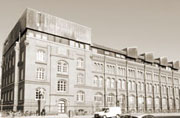


German National Library of Science and Technology (TIB)
Welfengarten 1b
To the south of the Welfenschloss at Welfengarten 1b stands the prominent 1960’s style main building of the university library. It was built in 1965 to house the University Library, which had been located until then in the Welfenschloss, and the Library of Science and Technology (TIB).
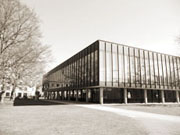


Marstallgebäude
Welfengarten 1a
The listed former royal stables, the Marstallgebäude, at Welfengarten 1a is part of the German National Library of Science and Technology and University Library Hannover (TIB/UB). It was built at the same time as the Royal Palace Welfenschloss in the mid 1860s to house the horses and carriages of the King of Hannover.
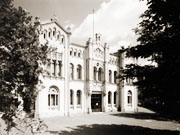


Theodor-Lessing-Haus
Welfengarten 2c
What is now known as the Theodor-Lessing-Haus at Welfengarten 2c was built in 1953 as the main refectory of the Institute of Technology, and now serves a variety of university facilities.
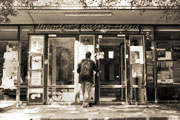


Chemistry Building
Callinstraße 3-9
A fine example of North German Neorenaissance can be seen in the building erected in Callinstraße 3-9 between 1906 and 1909 by State Building Inspector Friedrich Ebel for the Institutes of Chemistry, and celebrated by the press at the time as the "Palace of Chemistry".
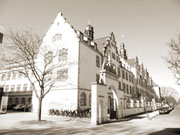


New Building Technical Informatics
Appelstraße 4
Technical Informatics is a new branch of science which received its own new building in Appelstraße 4 in 1999. Four institutes from the Department of Electrical Engineering and Information Technology, which had been in cramped conditions and spread over several buildings, were brought together here.
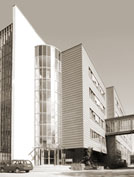


New Main Mensa
Callinstraße 23
The main mensa, or refectory, in Callinstraße 23, patronized by more than 6,000 guests per day, was built in 1981. The generously proportioned plaza in front is a public space between the university and the Nordstadt.
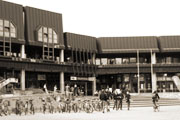


Former Barracks
Appelstraße/Callinstraße
In the early 1960s, the university acquired a large site between Callinstraße, Schneiderberg and Appelstraße to erect new buildings for engineering institutes.
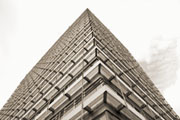


Brick Building Nienburger Straße
Nienburger Straße 1-4
The brick building at Nienburger Straße 1-4 designed by Franz Kassbaum and completed in 1931 is home to several engineering institutes. In the 1920s, the existing space in the Welfenschloss became insufficient to meet the needs of the expanding Civil Engineering Department.
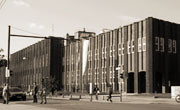


College of Education
Bismarckstraße 2
The red brick complex at Bismarckstraße 2, which is no longer used by Leibniz Universität, was used for teacher training from its completion in 1935.
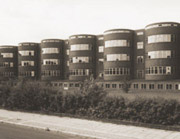


ÜSTRA Building
Am Hohen Ufer 6
For a short time, the building Am Hohen Ufer 6 housed the Humanities and Social Sciences Institutes of Hannover Institute of Technology. Designed by Dieter Oesterlen, it had been built for the administration of the Hannover tram system in 1963.
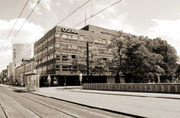


Parkhaus
Nienburger Straße 17
The Parkhaus at Nienburger Straße 17, which was built as a restaurant in 1895, now houses several university departments.
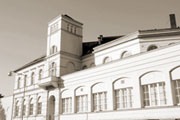


Hanomag Building
Hanomagstraße 8
The newly founded Faculty of Law of the university started up in 1974 in rooms no longer used by the university at Hanomagstraße 8.
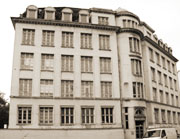


Horticulture, Landscape Architecture and Environmental Planning Complex
Herrenhäuser Straße 2/2a
The complex at Herrenhäuser Straße 2 was built for the College of Horticulture and Land Culture founded in Sarstedt near Hannover in 1947. In 1952 this became an integral part of Hannover Institute of Technology.
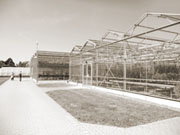


Architecture Building
Herrenhäuser Straße 8
The building at Herrenhäuser Straße 8 has been owned by the university since 2003 and is used by the Faculty of Architecture and Landscape Sciences.
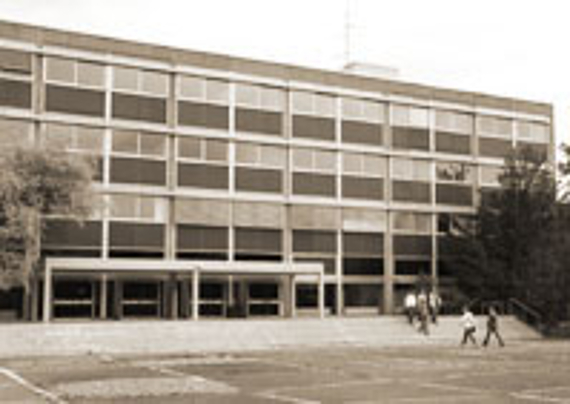
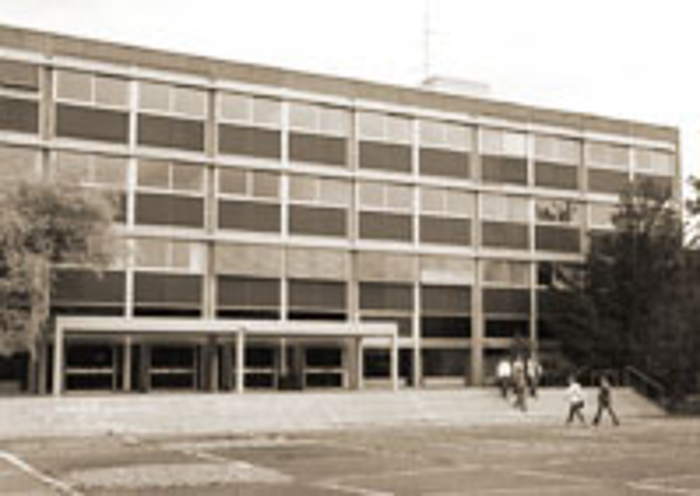
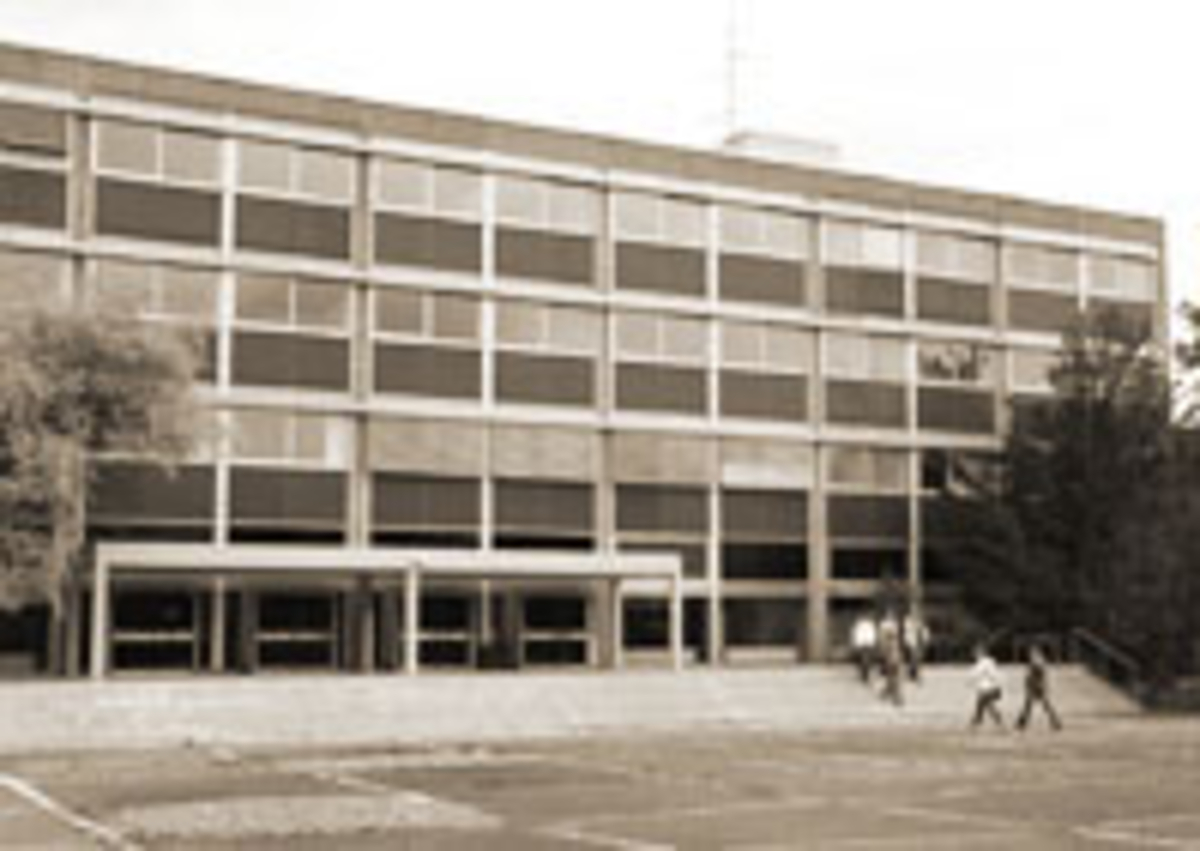
Student Hostel
Dorotheenstraße 5-7
The student hostel at Dorotheenstraße 5-7, which can house 500 students, was built in the mid 1960s. The land was provided free of charge by the City of Hannover.
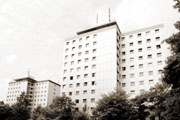


Hannover Production Technology Centre
An der Universität 2, 30823 Garbsen
Hannover Production Technology Centre (PZH) built in Garbsen in 2004 is home to six mechanical engineering institutes devoted to production technology.
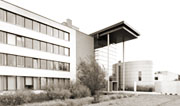


Former Bürgerschule
Am Kleinen Felde 30
The building Am Kleinen Felde 30 erected as a Bürgerschule, or Higher Grade School, in 1898 housed macromolecular chemistry, part of mechanical engineering, and civil engineering at Leibniz Universität Hannover for many years.
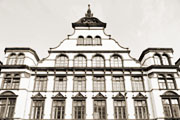


Laboratory of Nano- and Quantum Engineering
Schneiderberg 39
A new research building was erected on the site belonging to Leibniz Universität at Schneiderberg 39 in 2008 and 2009. The keys were handed over to the users of the new Laboratory of Nano- and Quantum Engineering (LNQE) in November 2009 after a two-year construction period.



Conti-Campus
Königsworther Platz 1
The name of the university complex "Conti-Campus" at Königsworther Platz 1 is a reminder of the previous use of the building. It was constructed in 1952/1953 according to a design of the Hannover professor of architecture Ernst Zinsser as the head office of the Continental Tyre Company.
